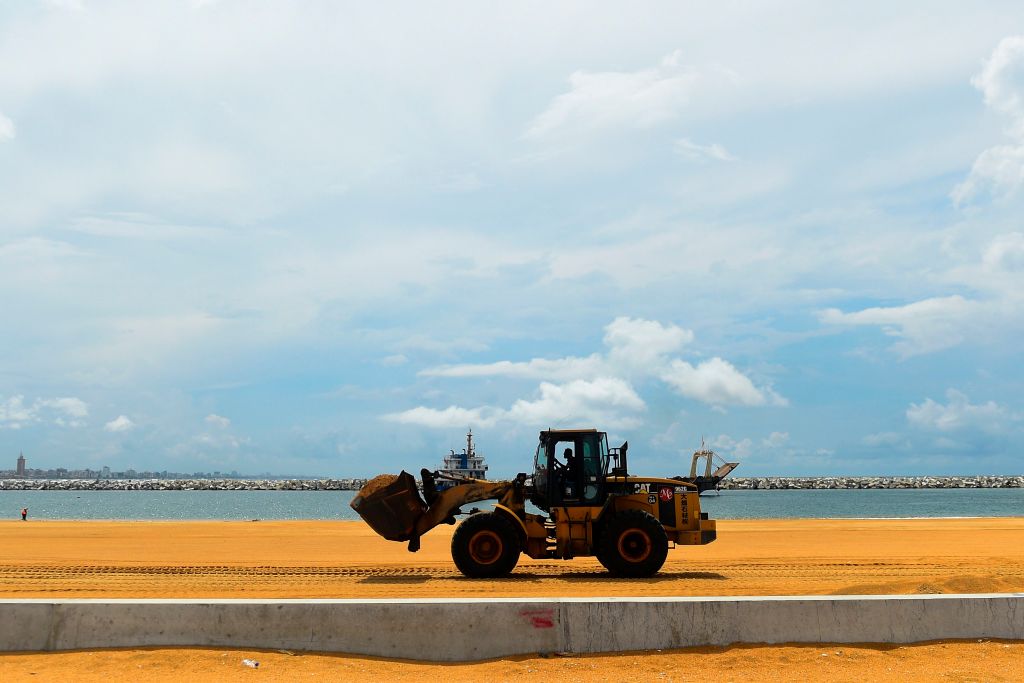 Print This Post
Print This Post- The Strategist - https://www.aspistrategist.org.au -
Will multilateral development banks step up to meet Sri Lanka’s funding gap?
Posted By Dinusha Panditaratne on September 21, 2020 @ 12:30

Article printed from The Strategist: https://www.aspistrategist.org.au
URL to article: https://www.aspistrategist.org.au/will-multilateral-development-banks-step-up-to-meet-sri-lankas-funding-gap/
[1] funding: https://asia.nikkei.com/Politics/International-relations/Sri-Lanka-piles-on-more-Chinese-loans-amid-virus-and-debt-crisis
[2] US$500 million: http://treasury.gov.lk/article/-/article-viewer-portlet/render/view/usd-500-million-facility-agreement-signed-between-sri-lanka-and-china
[3] existing facility: https://www.cbsl.gov.lk/en/news/The-Government-of-Sri-Lanka-secured-USD-1-Billion-Foreign-Currency-Term-Financing-Facility
[4] US$140 million: http://www.ft.lk/front-page/BOC-China-Development-Bank-sign-landmark-deal-for-140-m-funding/44-702412
[5] redoubled: https://asia.nikkei.com/Opinion/Sri-Lanka-s-Rajapaksa-restoration-is-complete.-What-comes-next
[6] paper: https://www.chathamhouse.org/publication/chinese-investment-and-bri-sri-lanka
[7] safeguards: https://www.chathamhouse.org/event/webinar-impact-chinas-belt-and-road-initiative-lessons-sri-lanka
[8] negative economic growth: https://www.adb.org/countries/sri-lanka/economy
[9] 87%: https://unsdg.un.org/sites/default/files/2020-07/LKA_Socioeconomic-Response-Plan_2020.pdf
[10] containing the pandemic: https://hpb.health.gov.lk/covid19-dashboard/
[11] decisive steps: https://carnegieindia.org/2020/05/21/sri-lanka-balancing-public-health-and-centralized-power-pub-81862
[12] first: http://www.adaderana.lk/news/55367/china-relaxes-travel-advisory-for-sri-lanka
[13] human rights: http://www.themorning.lk/focus-shifts-towards-geneva/
[14] infrastructure gap: https://www.chathamhouse.org/sites/default/files/CHHJ8010-Sri-Lanka-RP-WEB-200324.pdf#page=9
[15] World Bank study: https://www.researchgate.net/publication/266020846_Infrastructure_Gap_in_South_Asia_Infrastructure_Needs_Prioritization_and_Financing
[16] public diplomacy: https://docs.aiddata.org/ad4/pdfs/Silk_Road_Diplomacy_Report.pdf
[17] India: https://lki.lk/events/lkis-dinusha-panditaratne-speaks-on-sri-lanka-at-the-32nd-asia-pacific-roundtable-in-kuala-lumpur/
[18] non-aligned: https://www.dailynews.lk/2020/05/29/features/219562/sri-lanka%E2%80%99s-foreign-policy-non-aligned-both-india-and-china-are-valued
[19] pledged: https://www.thehindu.com/news/international/join-me-in-building-sri-lanka-gotabaya/article30008907.ece
[20] from the Asian Development Bank: https://economynext.com/sri-lanka-in-talks-with-adb-for-us300mn-credit-more-from-chinas-aiib-france-treasury-67807/
[21] International Monetary Fund: https://economynext.com/sri-lanka-imf-continuing-talks-for-emergency-support-over-covid-19-crisis-69589/
[22] highlighted: https://thediplomat.com/2020/04/china-to-the-rescue-in-sri-lanka/
[23] US$500 million: https://www.devex.com/news/in-sri-lanka-with-great-power-competition-comes-great-headaches-for-mcc-97844
[24] swap facility: https://ceylontoday.lk/news/swaps-gold-appreciation-boost-reserves
[25] commit: https://srilanka.embassy.gov.au/clmb/0.html
[26] peaceful Indian Ocean: https://www.iora.int/media/23699/jakarta-concord-7-march-2017.pdf
[27] know: https://ceylontoday.lk/news/task-force-appointed-by-president-only-for-a-short-term-admiral-jayanath-colombage-1
[28] ASPI research project on the vulnerability of Indo-Pacific island states: https://www.aspi.org.au/report/indo-pacific-island-states-vulnerabilities-age-covid